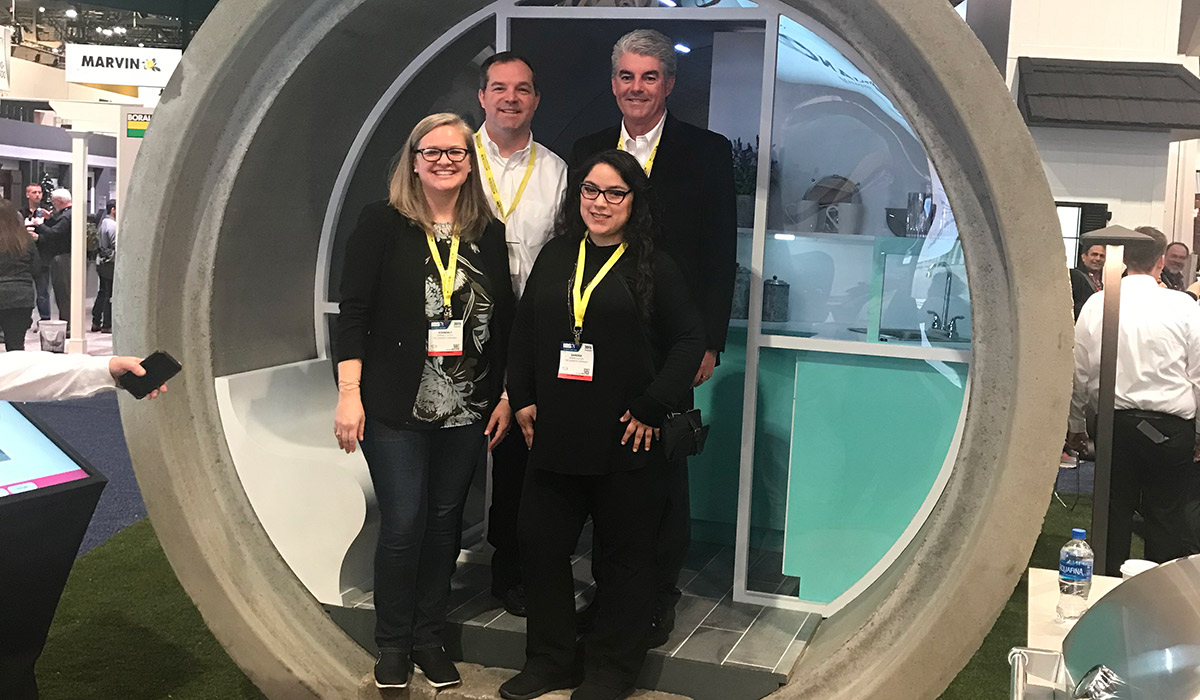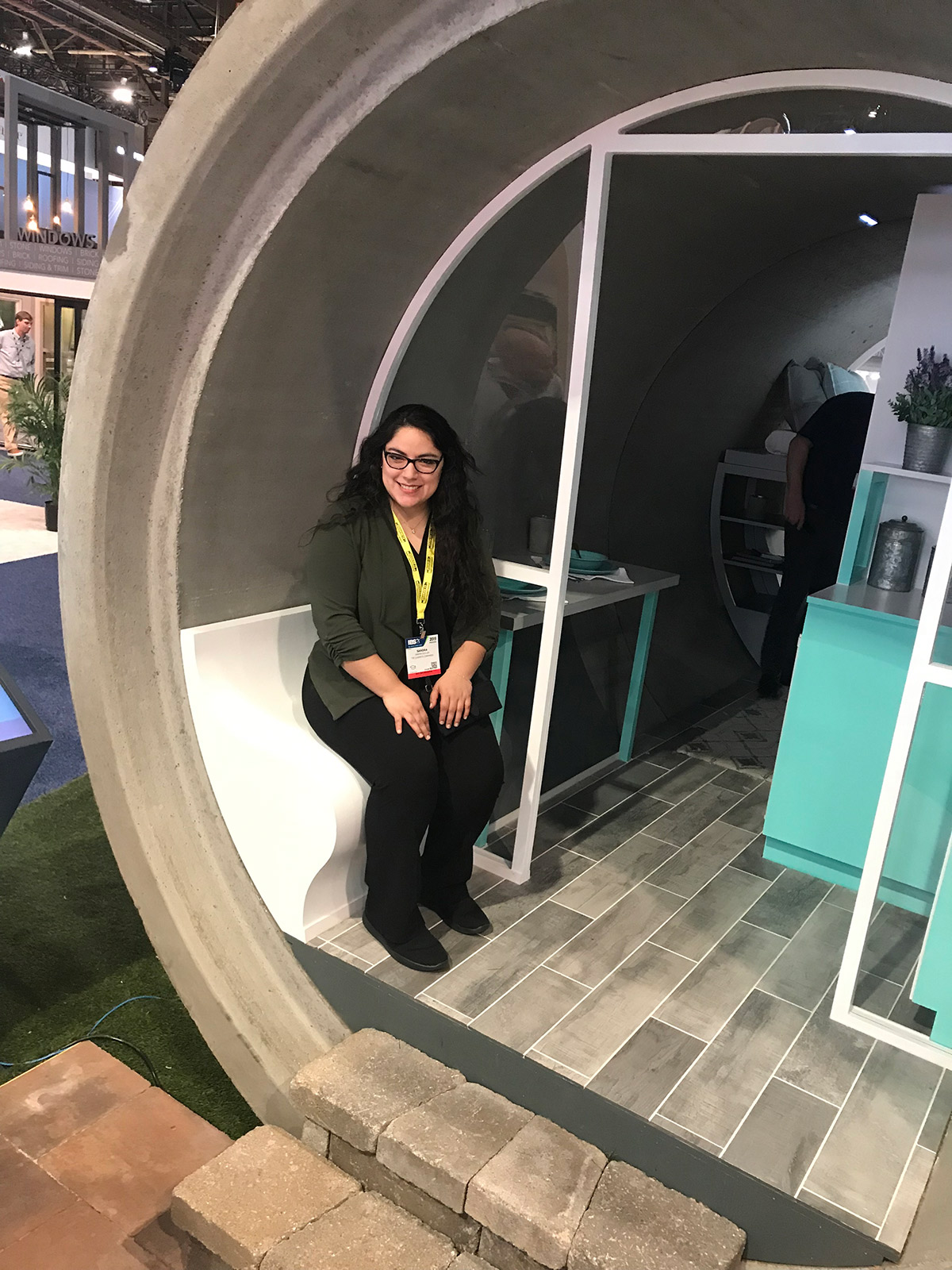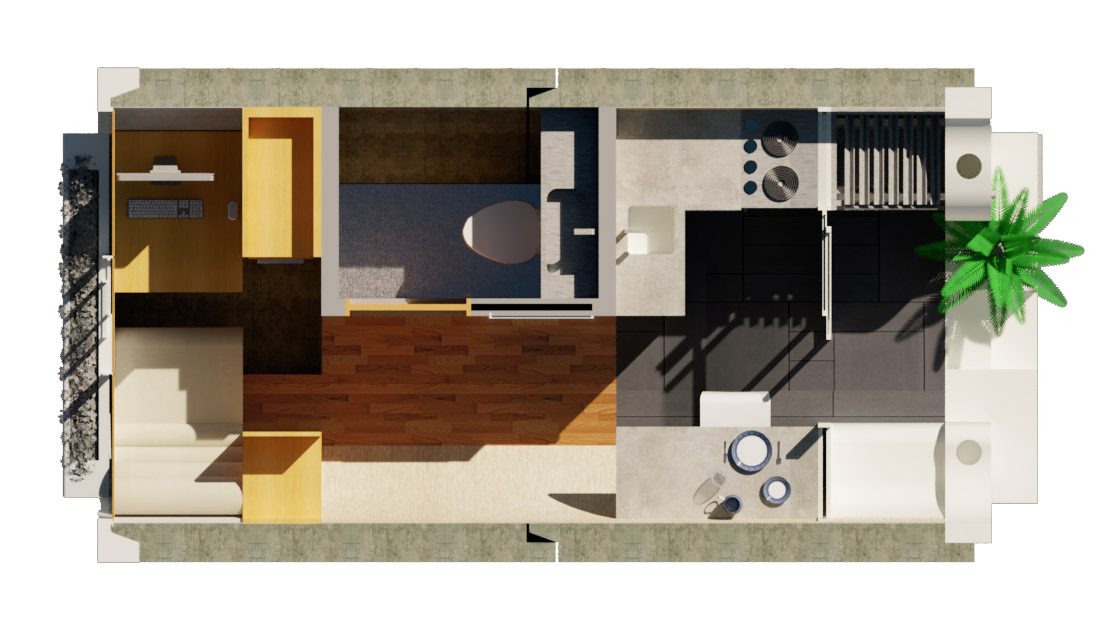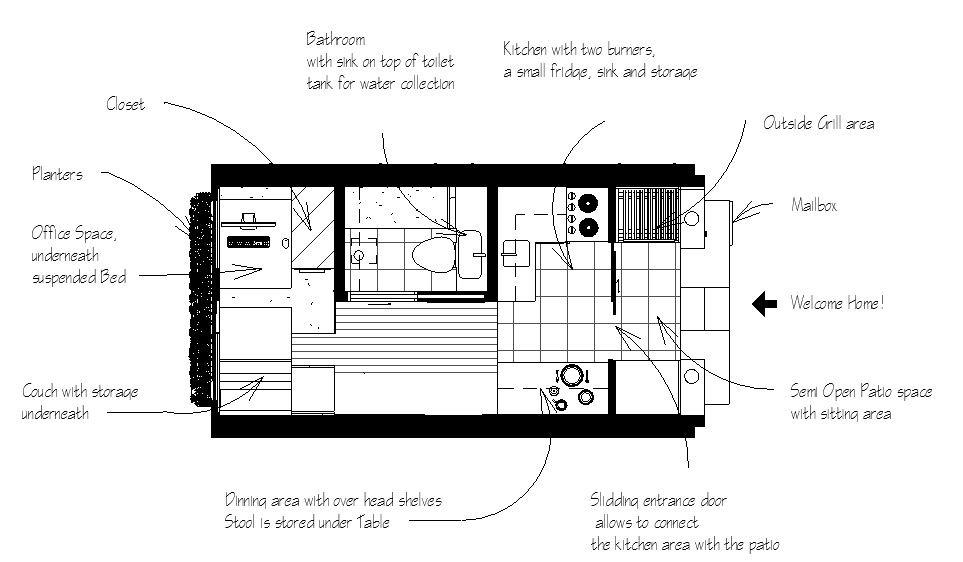

Create a fully functional living space … inside a concrete pipe. This was the challenge posed to architecture students based on a simple notion, “Overpopulation, homelessness, natural disasters. These are the realities that architects are facing when designing now and for the future.”
With this in mind, the American Institute of Architectural Students (AIAS) and Rinker Materials put out a call for submissions for their tiny home design competition. Both Rinker and AIAS saw building an entire home in two 96” long by 96” diameter concrete pipes not only as an interesting challenge, but a real-world solution for those affected by disaster, poverty, or political unrest.
 By the time word of this competition reached Sandra D. Guillen, a recent architecture graduate at Catholic University, she had only 24 hours before the deadline to design an entire tiny home that could be constructed within the parameters of a pipe. Though she says the time constraint was her greatest challenge in the project, Guillen created and submitted an ingenious design that won first place and a $5,000 grant. She also saw her project constructed and displayed at the National Association of Home Builders International Builders Show in Las Vegas, Nev.
By the time word of this competition reached Sandra D. Guillen, a recent architecture graduate at Catholic University, she had only 24 hours before the deadline to design an entire tiny home that could be constructed within the parameters of a pipe. Though she says the time constraint was her greatest challenge in the project, Guillen created and submitted an ingenious design that won first place and a $5,000 grant. She also saw her project constructed and displayed at the National Association of Home Builders International Builders Show in Las Vegas, Nev.
Guillen initially drew design inspiration from her childhood in Bolivia. She saw the project as an opportunity to make a difference. “Once I got into designing it, I was full on board,” said Guillen.
Guillen’s design included many features that maximized the space with which she was working. She included an elevated bed with room for an office space beneath, and a paver planter for sustainable gardening. Guillen also wanted the space to feel like a home. As she put it, “I didn’t want people to feel uncomfortable.”
When she wasn’t designing collapsible work spaces and couches, Guillen still had to solve some practical problems. “I had to make sure people wouldn’t be walking around hitting their heads,” she said with a chuckle.
Guillen also found that her Catholic U education had her well prepared for the task. When asked what parts of her education helped her prepare for this task she simply answered, “everything.” She even used skills from her first studio project to help her complete this design.
AIAS, Rinker, and Guillen all see the great potential for the project. In an article for the Las Vegas Review-Journal, Frank Owens, vice president of marketing for Rinker Materials’ parent company, The Quikrete Co., said, “It dawned on us that this would be a perfect structure for disaster relief, homelessness and, as we investigated further, potentially affordable housing.”


